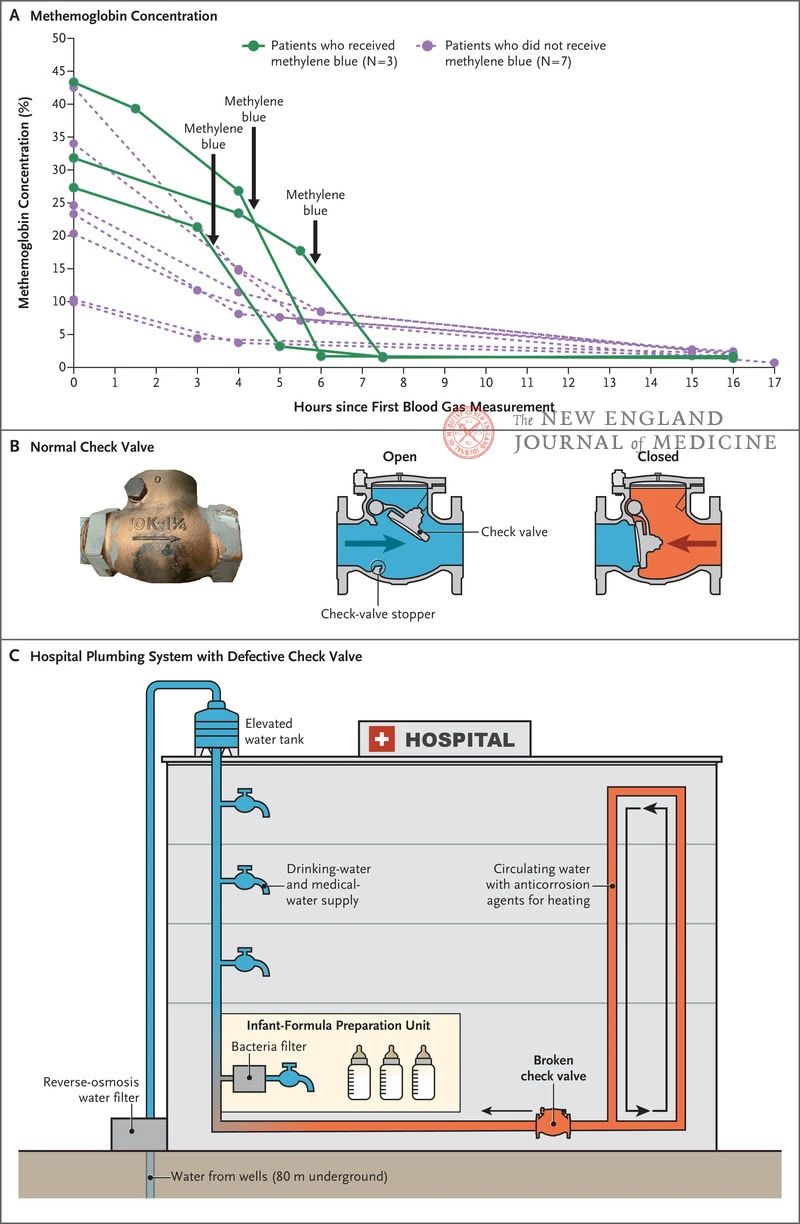Recently, a newsletter article from Gunma University School of Medicine in Japan reported that a hospital caused cyanosis in a number of newborns due to tap water pollution. The study suggests that even filtered water can be inadvertently contaminated and that babies are more likely to develop methemoglobinemia.
Methemoglobinemia Outbreak in a Neonatal ICU and Maternity Ward
Ten newborns in the neonatal intensive care unit and the maternity ward developed methemoglobinemia as a result of being fed formula formulated with contaminated tap water. Methemoglobin concentrations ranged from 9.9% to 43.3%. Three patients received methylene blue (arrow), which restores the oxygen-carrying capacity of hemoglobin, and after nine hours, all 10 patients returned to normal on average. Figure B shows a diagram of the damaged valve and its normal function. Figure C shows the relationship between the drinking water supply and the heating circulation pipe. The hospital’s drinking water comes from a well and goes through a purification system and a bacteria-killing filter. The circulation line for heating is separated from the drinking water supply by a check valve. The failure of the check valve causes water to flow back from the heating circulation line into the drinking water supply line.
Analysis of tap water showed high nitrite content. After further investigation, we determined that the drinking water was contaminated due to a valve failure caused by the backflow of the hospital heating system. The water in the heating system contains preservatives (Figures 1B and 1C). Although the tap water used in the formulation of infant formula has been sterilized by filters to meet national standards, the filters cannot eliminate nitrites. In fact, tap water throughout the hospital was contaminated, but none of the adult patients developed methemoglobin.
Compared to older children and adults, infants younger than 2 months are more likely to develop methemoglobinosis because infants drink more water per kilogram of body weight and have lower activity of NADH cytochrome b5 reductase, which converts methemoglobin to hemoglobin. In addition, the higher pH in the infant’s stomach is conducive to the presence of nitrate-reducing bacteria in the upper digestive tract, which converts nitrate to nitrite.
This case shows that even when formula is prepared using properly filtered water, methemoglobin can be caused by unintentional water contamination. In addition, this case highlights the fact that infants are more susceptible to methemoglobin than adults. Recognizing these factors is critical to identifying the source of methemoglobin and limiting the extent of its outbreak.
Post time: Mar-09-2024





